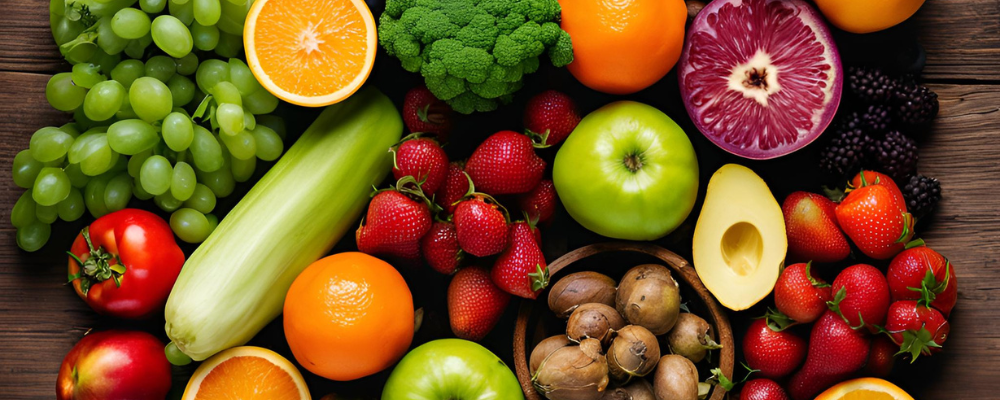
Who Feeds Us—and Who Decides? The Fight for the Future of Food
Why it matters: The global food system—dominated by a handful of corporations—creates hunger, chronic disease, ecological collapse, and exploitation while claiming to “feed the world.” The truth: It feeds profit first. People and the planet are paying the price.
The shift: Communities are reclaiming food production through regeneration, decentralization, and next-gen proteins that make factory farming obsolete.
Where We Went Wrong
- Industrial design failure: Food became a commodity, not a human right. Nutrition was replaced by yield, and diversity by monoculture.
- Consolidation: Just 4 companies control 90% of global grain trade, 5 companies control most seeds, and 10 control nearly every grocery brand.
- Vertical capture: Corporations now own the seeds, chemicals, patents, and supply chains—farmers became renters on their own land.
- Policy capture: Trade deals, subsidies, and farm bills were written for agribusiness—not local farmers or human health.
Bottom line: Hunger is not a lack of food. It’s a lack of democratic control over food.
The Damage
- Health: Processed calorie-based diets drive 2 billion cases of diet-related disease.
- Climate: Industrial agriculture produces 26% of global greenhouse gases—more than every car, plane, and ship combined.
- Soils: We’ve lost one-third of Earth’s topsoil—the basis of real food security.
- Water: Factory farms and fertilizer runoff create 5,000+ dead zones in rivers and oceans.
- Ethics: Factory farming traps 80 billion animals a year in cruelty-based supply chains.
- Inequality: Farmers go bankrupt while corporate profits hit record highs.
Protein Problem: The Factory Farm Trap
Today’s protein system is built on:
- Land abuse: 77% of the world’s agricultural land is used for livestock—but provides only 18% of calories.
- Food waste: 80% of soy and corn go to feed animals—not people.
- Pandemic risk: Crowded animal operations are disease factories.
So What’s Next? Precision Fermentation + Cellular Agriculture
These aren’t sci-fi—they’re here.
| Tech | What it is | Why it matters |
|---|---|---|
| Precision Fermentation | Microorganisms that produce proteins, fats, enzymes | Make milk proteins, collagen, insulin—no animals |
| Cellular Agriculture | Growing meat directly from cells | Real meat—without slaughter |
| Biomanufacturing | Local protein production hubs | Enables food sovereignty |
✅ Not GMO crops – No gene-modified seeds. No pesticides. No monocrops.
✅ Cleaner + safer – Sterile, tracked, transparent.
✅ Massively efficient – Uses 99% less land, 96% less water, and slashes emissions.
Proof It Works
- Perfect Day makes animal-free dairy proteins used in ice cream and cheese—no cows.
- Upside Foods grows real chicken from cells—FDA approved.
- Solar Foods produces protein from CO₂ and electricity—literally turning air into food.
- Formo (Germany) is making real cheese—minus cows and methane.
What People Can Do Locally (Now)
You don’t have to wait for corporations or politicians:
✅ Start community-owned food co-ops
✅ Build local greenhouse networks + soil farms
✅ Launch farmer-to-neighbor food hubs
✅ Join land trusts to protect local food sovereignty
✅ Support right-to-repair for farmers + open-source seeds
✅ Advocate bans on foreign land grabs + monopolies
✅ Pilot local precision fermentation hubs for schools & hospitals
✅ Connect with bioregional food alliances
Real food security = local + regenerative + distributed + democratic.
Yes, but…
“Is this anti-farmer?” No—this liberates farmers from debt + Big Ag contracts.
“Is this safe?” Safer than factory farms—no hormones, no antibiotics, no pathogens.
“Will it kill rural jobs?” No—it creates more local jobs in fermentation, greenhouse farming, logistics, and fabrication.
“Does this end animal agriculture?” No—but it can end industrial cruelty while supporting ethical, small-scale farming.
Signals of the Future Food System
- Co-op owned grain mills in the U.S. + Latin America
- Indigenous food sovereignty networks restoring native crops
- Biofood hubs in Singapore + Finland
- Regenerative grazing + agroforestry scaling in Kenya + Brazil
- Community cold storage + micro-distribution in Detroit + Portugal
- School bioreactors (coming within a decade)
The Bottom Line
Our food crisis didn’t begin in the field. It began with a system designed for control—not nourishment.
To fix food, we must decentralize it, democratize it, and regenerate it.
Food is power. Power must return to the people.
Call to Action
Mobilized News is tracking:
✅ Community food revolutions
✅ Decentralized food sovereignty
✅ Precision fermentation + regenerative farming
✅ Open-source biomanufacturing
✅ Co-op food infrastructure
Want to help build a just and resilient food system?
Join us at MobilizedNews.com — where food systems meet solutions.